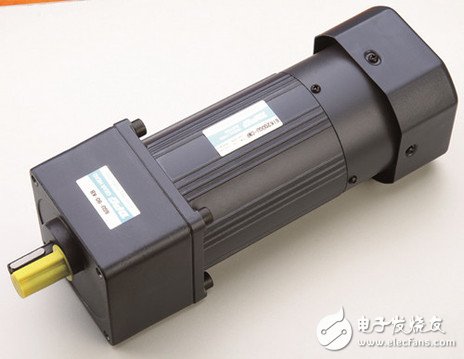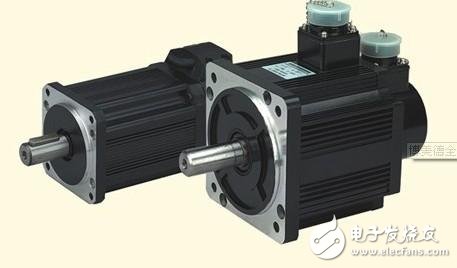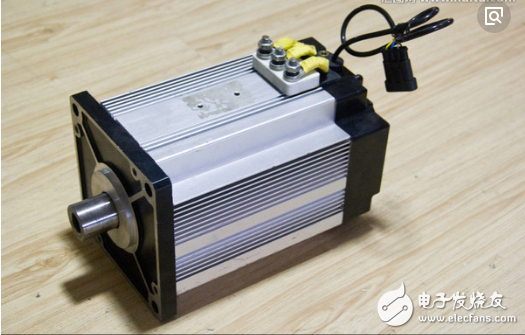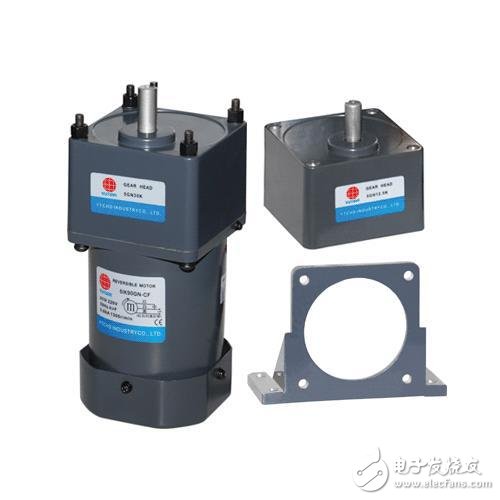"AC motor" is a machine for converting mechanical energy and AC power. Due to the tremendous development of AC power systems, AC motors have become the most commonly used motors. Compared with DC motors, AC motors have no commutator (see commutation of DC motors), so they are simple in structure, easy to manufacture, and relatively robust. They are easy to make motors with high speed, high voltage, high current and large capacity. AC motor power covers a wide range, from a few watts to hundreds of thousands of kilowatts, or even millions of kilowatts. In the early 1980s, the largest steam turbine generator had reached 1.5 million kilowatts. The AC motor was invented by the American Serbian scientist Nikola Tesla. Description of single-phase capacitive motors: Single-phase motors have two windings, the start winding and the running winding. The two windings are spatially different by 90 degrees. A large-capacity capacitor is connected in series on the starting winding. When the running winding and the starting winding pass the single-phase alternating current, the current in the starting winding is advanced by 90 degrees from the current of the running winding due to the action of the capacitor, reaching the maximum first. value. Two identical pulsed magnetic fields are formed in time and space, so that a rotating magnetic field is generated in the air gap between the stator and the rotor. Under the action of the rotating magnetic field, an induced current is generated in the rotor of the motor, and the current interacts with the rotating magnetic field. The electromagnetic field torque causes the motor to rotate. Rated speed n=60f/p(1-s)=synchronous speed N1(1-S) f power frequency p motor pole pair s slip rate 1. Use frequency converter to change power frequency speed regulation, large speed range, good stability and smoothness, and hard mechanical characteristics. That is to say, the rated load speed drops less. It is a stepless speed regulation. Suitable for most three-phase squirrel cage asynchronous motors. 2. Change the magnetic pole logarithmic speed regulation, which belongs to the class-level speed regulation and the smoothness of the speed regulation is generally used for metal cutting machine tools. 3. Change the slip rate speed regulation. (1) Rotor loop series resistance: used for AC wound asynchronous motors. The speed regulation range is small, the resistance consumes power, and the motor efficiency is low. Generally used in cranes. (2) Change the power supply voltage speed regulation, the speed regulation range is small, the torque decreases greatly with the voltage drop, and the three-phase motor is generally not used. Used for single-phase motor speed regulation, such as fans. (3) Cascade speed regulation, the essence is that the rotor introduces an additional electromotive force and changes its size to adjust the speed. It is also only used for winding motors, but the efficiency is improved. First, the variable pole logarithmic speed control method: change the red coiling mode of the stator winding to change the stator pole number of the cage motor to achieve the speed regulation. Second, the frequency conversion speed control method: use the frequency converter to change the frequency of the motor stator power supply, thereby changing the speed control method of its synchronous speed. Third, the cascade speed control method: Cascade speed regulation refers to the adjustable additional potential in the rotor circuit of the wound-type motor to change the slip of the motor to achieve the purpose of speed regulation. Most of the slip power is absorbed by the added additional potential, which is then used to generate additional means to return the absorbed slip power back to the grid or to convert energy for use. According to the slip power absorption and utilization mode, the cascade speed regulation can be divided into the motor cascade speed regulation, the mechanical cascade speed regulation and the thyristor cascade speed regulation mode, and the thyristor cascade speed regulation is often adopted. Fourth, the winding type motor rotor string resistance speed control method: The line asynchronous motor rotor is inserted into the additional resistor, so that the slip of the motor is increased, and the motor runs at a lower speed. The greater the resistance in series, the lower the speed of the motor. The method is simple in equipment and convenient in control, but the slip power is consumed in the form of heat on the resistor. It has a graded speed regulation and soft mechanical characteristics. V. Stator voltage regulation method: When changing the stator voltage of the motor, different speeds are obtained. Since the torque of the motor is proportional to the square of the voltage, the maximum torque drops a lot, and the speed adjustment range is small, making the general cage motor difficult to apply. In order to expand the speed regulation range, the voltage regulation speed regulation should use a cage motor with a large rotor resistance value, such as a torque motor for voltage regulation and speed regulation, or a series frequency sensitive resistor on a wound motor. Sixth, electromagnetic speed control motor speed control method: electromagnetic speed control motor is composed of cage motor, electromagnetic slip clutch and DC excitation power supply. The DC excitation power supply is small, usually composed of a single-phase half-wave or full-wave thyristor rectifier. Changing the conduction angle of the thyristor can change the magnitude of the excitation current. 7. Hydraulic coupler speed control method: The hydraulic coupler is a hydraulic transmission device, generally composed of a pump wheel and a turbine. When the pump wheel rotates under the driving of the prime mover, the liquid in which the liquid is driven is rotated by the blade. When entering the turbine along the outer ring of the pump wheel under the action of centrifugal force, the turbine blades are thrust on the same steering, which drives the production machinery. Speed ​​regulation is achieved by different hydraulic forces (lubricating oil and turbine). (4) Electromagnetic speed regulation. Only for slip motors. By changing the current of the excitation coil, the mechanism is simple, but the control power is small. It is not suitable for long-term low speed operation. In practical applications, AC motors are always associated with production machinery to form an electric drive system. Different production machines require different speeds. Even if the same production machine needs different speeds under different operating conditions, it is necessary to adjust the running speed of the drag system, that is, the AC motor speed is generated. AC motors, especially cage induction motors, have no mechanical reversing device, simple structure, reliable operation, convenient maintenance, low cost, and good energy saving effect, and are higher than DC motors in terms of single unit capacity and speed limit; Especially in harsh environments with high dust and explosion hazard, AC motors are more suitable. However, the speed regulation performance of the AC motor is not as good as that of the DC motor. For a long time, the AC motor can only operate at a constant speed. Solving the problem of speed regulation of AC motors has always been the subject of concern and research by electric drag workers. A brief history of development As early as the 1930s, many scholars proposed various AC speed control systems in an attempt to improve the speed regulation performance of AC motors. Cordless Barcode Scanner,Zebra Barcode Scanner Wireless,Zebra Cordless Scanner,Symbol Cordless Scanner Guangzhou Winson Information Technology Co., Ltd. , https://www.barcodescanner-2d.com



AC motor speed control principle and method
AC motor introduction